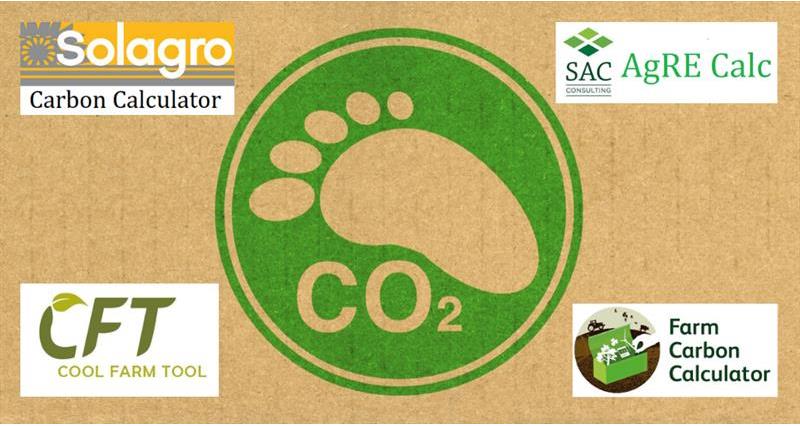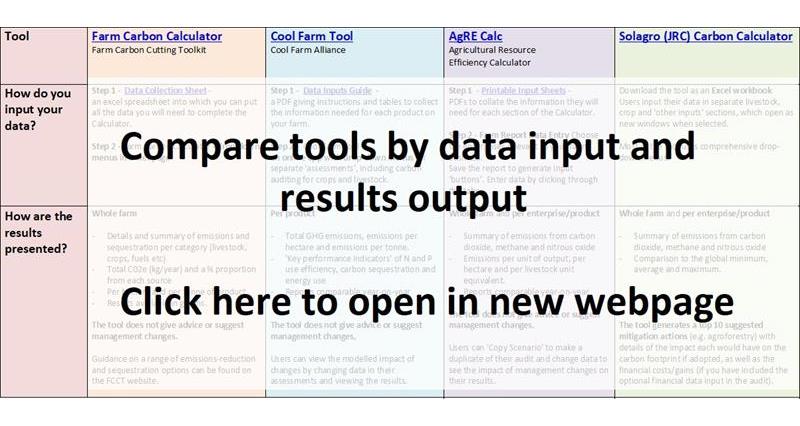There are various tools you can use to assess the carbon footprint of your farm business. The popular (and free) options below have been designed to be straight‑forward to complete and will give a good indication of Greenhouse Gas (GHG) emissions and, in some cases, carbon sequestration on your farm. Some also suggest ways to reduce the carbon footprint of the farm.
If you work with an environment advisor as part of your farm management or business planning they may be able to help with completing and interpreting a farm carbon audit, but each of the tools mentioned here can also be completed by anyone who has access to farm records.
Collecting the data you will need for a carbon audit is usually the most time‑consuming part of the process. Each tool detailed below provides a data‑input guide for users to collate information from their farm records.
Here’s a quick summary of the information you will need before you start a farm carbon audit:
|
Cropping |
Livestock |
Other (often optional) |
|
Harvested yield and marketable yield product weights |
Herd or flock size |
Land use change |
|
Growing area; crop area and soil testing data |
Feed and grazing |
Tillage practices |
|
Fertiliser applications: type and rate |
Manure management |
Cover cropping |
|
Number of pesticide applications |
Energy use (kWh and fuel use) |
Waste management |
|
Energy use (kWh and fuel use) |
Transport of feed and other inputs |
Building, machinery and materials |
|
Optionally: transport: mode, weight of product and distance |
Dairy output |
Distribution |
|
|
|
Sequestration |

